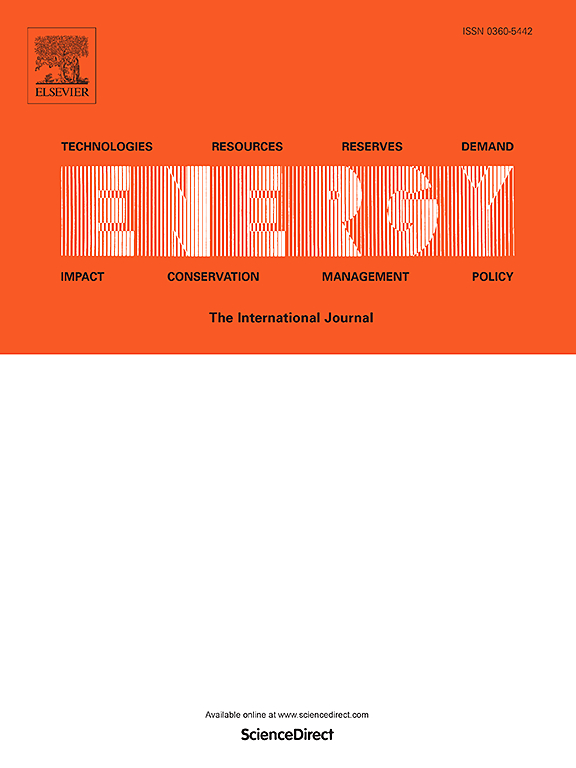Performance analysis of a novel biomass thermochemical conversion cascade utilization system driven by concentrated solar energy
IF 9
1区 工程技术
Q1 ENERGY & FUELS
引用次数: 0
Abstract
The utilization of complementary energy sources is an effective approach to addressing the existing technological constraints associated with renewable energy. A novel system is proposed that hybrid several thermochemical process. The temperature of the heat transfer fluid is matched to the thermochemical reaction conditions to make cascade use of energy. The system can generate 60 MW of electricity, and the bio-oil output reaches 7500 kg/h and the bio-char output reaches 2500 kg/h during the time period of better radiation conditions. Thermodynamic assessments indicate that the proposed novel system exhibits higher energy efficiency as 42.01 %, which is about 5 %–12 % higher than solar driven biomass gasification system. And the exergy efficiency of the novel system is 35.61 %, which is about 4 %–11 % higher than solar driven biomass gasification system. Additionally, the system exhibits good economic performance and superior environmental performance with a dynamic payback period of 7.8 years. CO2 emissions from the operation and maintenance process is 77.30 %, which accounts for the largest share of the overall emissions.
求助全文
约1分钟内获得全文
求助全文
来源期刊

Energy
工程技术-能源与燃料
CiteScore
15.30
自引率
14.40%
发文量
0
审稿时长
14.2 weeks
期刊介绍:
Energy is a multidisciplinary, international journal that publishes research and analysis in the field of energy engineering. Our aim is to become a leading peer-reviewed platform and a trusted source of information for energy-related topics.
The journal covers a range of areas including mechanical engineering, thermal sciences, and energy analysis. We are particularly interested in research on energy modelling, prediction, integrated energy systems, planning, and management.
Additionally, we welcome papers on energy conservation, efficiency, biomass and bioenergy, renewable energy, electricity supply and demand, energy storage, buildings, and economic and policy issues. These topics should align with our broader multidisciplinary focus.
 求助内容:
求助内容: 应助结果提醒方式:
应助结果提醒方式:


